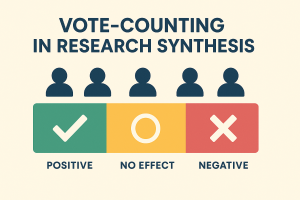The Brookbush Institute Publishes a NEW Glossary Term: 'Vote-counting (in Research Synthesis)'
The Brookbush Institute continues to enhance education with new courses, a modern glossary, an AI Tutor, and a client program generator.
While statisticians may raise concerns about vote-counting, such critiques are often rooted in strict mathematical formalism rather than the practical realities of research synthesis.”
NEW YORK, NY, UNITED STATES, August 27, 2025 /EINPresswire.com/ -- - Excerpt from Glossary Term: Vote-counting (in Research Synthesis)— Dr. Brent Brookbush, CEO of Brookbush Institute
- Additional Glossary Term: Meta-analysis (MA)
- Related Certification: Certified Personal Trainer (CPT) Certificate
DEFINITION
Vote-counting (in Research Synthesis): Vote-counting is a method used in research synthesis to assess the general trend of outcomes across multiple studies by tallying the number of studies that show a positive effect, a negative effect, or no effect. This approach treats each study as a single data point, considering only the direction and statistical significance of the results, rather than the magnitude or sample size.
PURPOSE AND USE
Vote-counting is often employed in the early stages of systematic reviews to identify general trends within the body of research. It can reveal patterns of agreement or disagreement and guide more in-depth quantitative analysis or meta-analysis.
VOTE-COUNTING IS ESPECIALLY USEFUL WHEN:
- Studies are too heterogeneous to be pool statistically.
- Effect size data is missing or inconsistently reported.
- The goal is first to identify the presence of a likely effect, rather than its magnitude.
HOW VOTE-COUNTING WORKS
- Categorization: Each study is grouped based on the direction and statistical significance of its findings. Most commonly, studies fall into one of three categories:
- Positive (increase, more than, A result, etc.): Studies that report statistically significant results in favor of the tested hypothesis (e.g., an intervention improves outcomes).
- Negative (decrease, less than, B result, etc.): Studies that report statistically significant results in the opposite direction (e.g., an intervention worsens outcomes).
- Neutral (Non-significant difference): Studies that do not find a statistically significant effect in either direction.
- Tallying: The number of studies in each category is counted.
- Interpretation: If one category represents a clear majority—especially when consistent across study types, populations, or contexts—the overall weight of evidence is interpreted as indicating a trend in that direction.
BROOKBUSH INSTITUTE VOTE-COUNTING RUBRIC:
- A is better than B in all studies = Choose A
- A is better than B in most studies, and additional studies demonstrate that A and B result in similar results = Choose A
- A is better than B in some studies, but most studies demonstrate that A and B result in statistically similar results = Choose A (but with reservations)
- A is better than B in some studies, some studies show similar results, and some studies show B is better than A = Results are likely similar (unless a reason can be identified that explains the difference in study results; for example, participant age, experience, injury status, etc).
- In some studies, A is better than B, and other studies demonstrate B is better than A. Unless the number of studies overwhelmingly supports one result, the results are likely to be similar.
FOR THE FULL TEXT AND SO MUCH MORE, CLICK ON THE LINK
Brent Brookbush
Brookbush Institute
+ +1 2012069665 ext.
email us here
Visit us on social media:
LinkedIn
Instagram
Facebook
YouTube
TikTok
X
Other
Legal Disclaimer:
EIN Presswire provides this news content "as is" without warranty of any kind. We do not accept any responsibility or liability for the accuracy, content, images, videos, licenses, completeness, legality, or reliability of the information contained in this article. If you have any complaints or copyright issues related to this article, kindly contact the author above.

